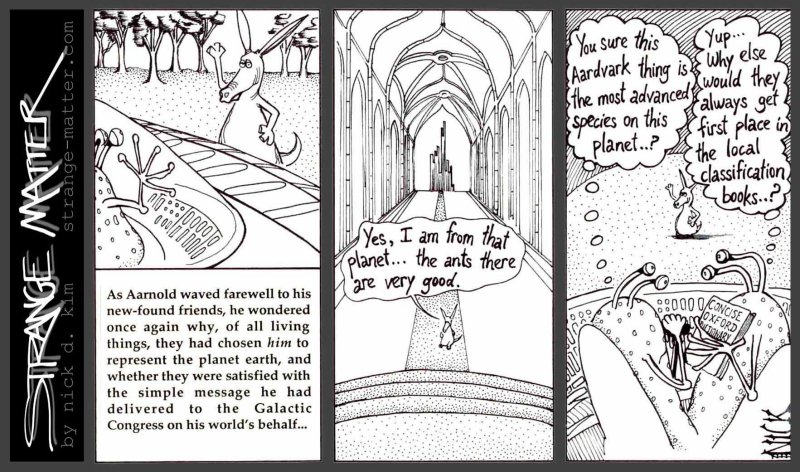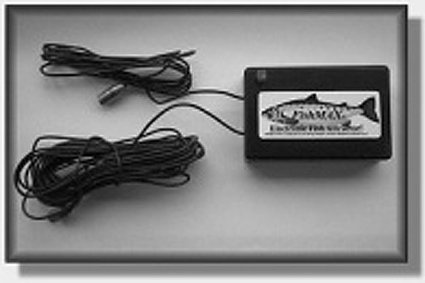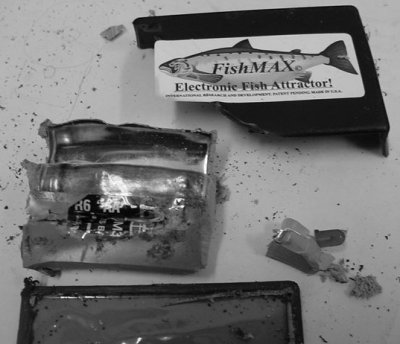This article is drawn from interviews with Allan Coukell on the NZ National Radio science programme “Eureka!” in 2001.
We live in an era where science is universally needed but rarely appreciated, little understood and much misunderstood. This is not just a problem of the wider non-scientific community; science is increasingly specialised and even prestigious scientists may have little awareness of areas of science outside their specialised research niche. Science is typically learned by studying and working in a particular discipline, but often such narrow perspectives don’t allow us to reflect on wider issues about science and appreciate its strengths and weaknesses. Furthermore, the specialized, abstract, nature of much science education all too often alienates many of its victims, while leaving the survivors blind to the limits and problems of their craft. There is irony in the way that science, the ultimate questioning activity, frequently fosters such unquestioning supporters and critics.
What is science?
Obviously science comes in many shapes and sizes and any attempt to provide a “one size fits all” description is bound to fail. Some scientists are engaged in an open-ended exploration of natural phenomena; some spend their lives developing and testing theories or models. Yet more scientists try to find out whether some theoretical entities like quarks are “real”, whilst others are trying to measure properties of the world with greater and greater precision. What, if any, are the unifying features of such a diverse discipline?
Given that science is such a multifarious thing, is it even sensible to ask a question such as “what is science?” Richard Feynman was a brilliant scientist who thought it was. Feynman, winner of the Nobel Prize for Physics in 1965, was not only one of the most brilliant scientists and science teachers of the 20th Century, he also reflected on the nature of science and communicated his perspectives vividly to a wide audience. Here’s how he addresses the question “What is science?”1:
“The word is usually used to mean one of three things, or a mixture of them. … Science means, sometimes, a special method of finding things out. Sometimes it means the body of knowledge arising from the things found out. It may also mean the new things you can do when you have found something out, or the actual doing of new things … so the popular definition of science is partly technology too.”
Science and technology are inextricably linked in the public’s eye; it is technology that provides the gadgets to which society becomes addicted. The reliable and informative nature of scientific knowledge underpins modern technology, but science is not simply a means to technology. As Feynman points out, it is crucial to realise that science is an intellectual adventure, a cultural activity that should be undertaken for its own sake:
“The things that have been found out [are] the gold. This is the … pay you get for all the disciplined thinking and the hard work. The work is not done for the sake of an application. It is done for the excitement of what is found out. You cannot understand science and its relation to anything else unless you understand and appreciate the great adventure of our time.”
Science is an adventure. It involves asking questions about the universe, coming up with theories about the way nature works, and testing those theories to see how valid they are. As any scientist knows, it is a challenging activity:
“Trying to understand the way nature works involves a most terrible test of human reasoning ability. It involves subtle trickery, beautiful tightropes of logic on which one has to walk in order not to make a mistake in predicting what will happen.”
Given the complexities of undertaking a scientific investigation, what is it about science that makes it such a powerful way of finding things out about the world? This is Feynman’s view:
“[S]cience as a method of finding out … is based on the principle that observation is the judge of whether something is so or not. All other aspects and char-acteristics of science can be understood directly when we understand that observation is the ultimate and final judge of an idea. But ‘prove’ used in this way really means ‘test’ … the idea should really be translated as ‘The exception tests the rule.’ Or, put another way, ‘The exception proves that the rule is wrong.’ That is the principle of science. If there is an exception to any rule, and if it can be proved by observation, that rule is wrong.”
Fireworks at NASA
Given the variety and complexity of science, scrutinising illustrative episodes of science in action is a good way to understand more about science. Again Feynman provides a lead: he not only discussed science, he exemplified the whole philosophy of questioning the world and testing scientific ideas. Early in 1986, when he was fighting terminal cancer, Feynman was once again thrust into the public eye when he performed one of the most public demonstrations of science during the inquiry into the tragic accident of the space shuttle “Challenger”. Feynman’s role in this investigation provides an illuminating vignette into science.
On January 28th 1986 the space shuttle Challenger was launched, and almost immediately exploded in a horrific fireball. It is salutary to sometimes reflect on the fallibility of science and the icons of technological sophistication. Yet science rose, phoenix-like, from the ashes, due almost exclusively to Feynman’s scientific acumen.2 Within a week of the accident, on February 4th, Feynman was appointed to a committee of inquiry. He immediately began quizzing the engineers at the Jet Propulsion Laboratory where much of the space shuttle technology was developed. On the first day he learned of well-known problems with the shuttle, including cracks in the turbine blades. Feynman also learned of problems with the O-rings – glorified rubber bands thinner than a pencil and more than 10 m long – that sealed the joins between sections of the solid-fuel rockets. A pair of O-rings had to expand to prevent the leak of hot gases during the burning of the solid fuel rockets. However, on some launches one of the O-rings was being scorched. Feynman jotted down some notes: “Once a small hole burn thru generates a large hole very fast! Few seconds catastrophic failure.”
Feynman flew to Washington and quizzed NASA officials, especially about the effects of the unusually cold weather at the launch of the Challenger shuttle. Because the elasticity of the O-rings would decrease at low temperatures, the problems with the O-rings would be exacerbated. Over the weekend Feynman was hot on the O-ring trail and, when the committee reconvened on Monday 12th February, he was frustrated by the inconclusive and evasive testimony of Lawrence Mulloy, the project manager for the solid fuel rockets. That night at dinner, his eyes fell on a glass of iced water and he saw a way to test whether 0oC (the temperature of the Challenger launch) would affect the resilience of the O-rings.
The next day he bought a small C-clamp and pliers. At the hearing Feynman asked for iced water and then broke off a bit of O-ring material as a sample was passed round. He clamped the O-ring material in the C-clamp, then after a short break in the proceedings, Feynman asked to speak to Mulloy. The rest has become a historic exchange captured by the TV cameras:
“I took this stuff that I got out of your seal and I put it in ice-water, and I discovered that when you put some pressure on it for a while and then undo it, it doesn’t stretch back … In other words, for a few seconds at least … there is no resilience in this particular material when it is at a temperature of 32 degrees [Fahrenheit]. I believe that has some significance for our problem.”
Here, in a nutshell, was the heart of the scientific problem. As another great theoretical physicist, Freeman Dyson, commented:
“The public saw with their own eyes how science is done, how a great scientist thinks with his hands, how nature gives a clear answer when a scientist asks her a clear question.”
Stages of the scientific process illuminated by Feynman’s experiment:
- Science starts with a problem: in this case the question of what caused the Challenger to explode.
- There is background detective work: finding out what is already known (in most scientific investigations this involves extensive literature work; here it involved garnering various streams of evidence such as the previous O-ring problems, the observed puff of smoke from the solid booster after 0.5s of flight, the lower resilience of rubbers at lower temperatures etc).
- Hypothesis formulation: that a momentary loss of resilience of the O-ring allowed hot gases to burn through the seal and caused the rocket to leak.
- Hypothesis testing via experiment, or observation: testing that the elasticity of the O-ring material was indeed compromised under the conditions of the launch.
- Bringing the results into the public arena for critical scrutiny: committee hearings are an unusual forum for discussion; for most research investigations the academic literature is where scientific claims are subject to critical scrutiny.
What does the Challenger inquiry tell us about science?
Without Feynman’s input, the committee of inquiry was likely to have been a whitewash. Most of the establishment would have liked to rubber stamp the worthiness of the shuttle programme. Scientists have to be careful about not falling into the trap of defending the work of a programme they believe in, rather than subjecting it to full critical scrutiny. Feynman, as the consummate scientist, shows that science is not about confirming your prejudices or defending your patch, it is about uncovering truths about the world.
Feynman’s beautiful experiment did not absolutely prove that problems with the O-rings caused the Challenger disaster. However, together with the history of problems with the shuttle and the particular climatic conditions for the launch, the case was proved “beyond reasonable doubt.” Scientific knowledge bears more than a passing resemblance to court proceedings: the more direct the experimental evidence, and the greater the accumulated weight of diverse lines of evidence, the more clear-cut scientific knowledge becomes.
Science is not a method of generating infallible truths about the world; only tyrants claim to do that. Neither is it simply a way of producing just another opinion about the world – no better or worse than any other (as many postmodern social scientists would have us believe). While science does not dispense absolute truths, it does produce the best knowledge we have in areas where we can subject our theories to rigorous tests. Although the theories that survive such tests can never be proved to be true, they are likely to be close to the truth if they survive detailed scientific scrutiny without being proved wrong.
Furthermore, in areas where theories have been well tested and flaws of the theory are exposed, it is often the case that the theory is not thrown out wholesale – instead the previous theory is often found to be a limiting situation for the theory that succeeds it. We are more confident in the predictions of Newtonian mechanics in the wake of Einsteinian mechanics than we were before, since we now clearly understand where it does and does not apply. Similarly we have not dispensed with atomic theory now we know that atoms are comprised of smaller entities.
So the heart of science is criticism, the use of observations and experiments to test our theories and always being able to accept that we might be wrong. The ability to modify our views, in the face of evidence, is a keystone of science.
Perhaps the last word should go to Feynman3:
“Science is a way to teach how something gets to be known, what is not known, to what extent things are known (for nothing is known absolutely), how to handle doubt and uncertainty, what the rules of evidence are, how to think about things so that judgments can be made, how to distinguish truth from fraud and from show.”
References
1 The quotations in this section are from Chapter 1 of The Meaning of it All, R. P. Feynman which is drawn from a public lecture that Feynman gave in April 1963.
[Back to text]
2 For a slightly more detailed chronology of Feynman’s participation in the Challenger investigation see Genius, by J. Gleick, pp414-428.
[Back to text]
3 Quoted in Genius, by J. Gleick, p285.
[Back to text]
This article originally appeared in Chem NZ No. 86.





